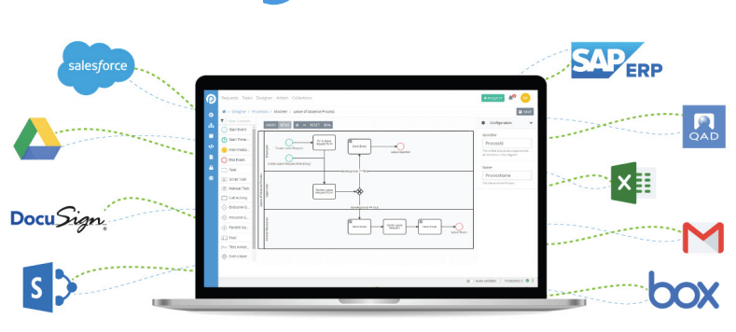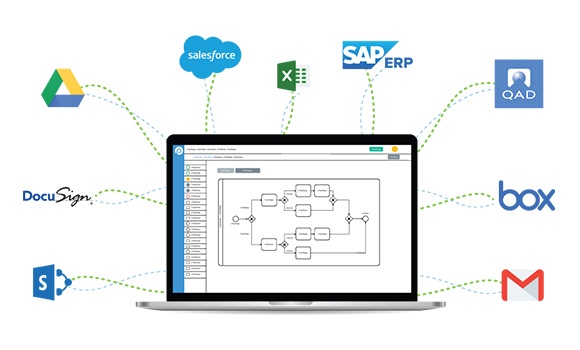OVERVIEW
Connected Factory is Bitia’s IoT solution to connect production lines and enable telemetry to receive production data and alarms in order to calculate efficiency and provide real-time dashboards on the cloud. With the integration of ProcessMaker, Bitia has expanded the solution’s capabilities, providing business users and operators with new process management functions.
BUSINESS CASE.
Alarm detection in production lines and cluster analysis is a good practice to achieve product and process improvement.
But when an alarm is triggered and a production downtime begins, operator and production manager need to open the request for service intervention from the maintenance person or service intervention from the machine manufacturer.
During the intervention process, the actors need to exchange information about the problem and possible solution.
But often this information is lost or operators note their observations using inefficient paper documents.
Finally, it is of enormous importance, considering the limitations of the maintenance team’s availability, to assign the correct priority to the request and act on the early downtime that will potentially cause the greatest losses.
SOLUTION AND BUSINESS VALUE
Using the extensive set of ProcessMaker APIs, Bitia has integrated a “service request” workflow into the Connected Factory that allows the operator to initiate a maintenance request.
Requests can be handled by involving the maintenance team or, if appropriate, routed to the production machine manufacturer’s service department.
Process actors share information, and the production manager can prioritize urgent interventions.
All maintenance process information is stored in the ProcessMaker platform to create a solution database.
Finally, a “data lake,” via API integration, receives the data collected to correlate production orders, production data, alarms, operator notes, and the duration of all the stages the process has gone through, from operator request to intervention resolution.
Automation of the maintenance process thus improves data collection and eliminates paper.
Correlating production data and alarms with operator and maintainer notes enables optimal analysis of losses generated by downtime.
At the same time, managers receive a clear and detailed view of maintenance intervention times and can optimize the internal process and the process with suppliers.
But this is only the most obvious benefit.
Most important is the adoption of a strategic asset in the enterprise: ProcessMaker integration enables customers to use the “Connected Factory” not only to monitor real-time production and make decisions, but also to drive decisions through the production process.
With the exponential growth of IoT solutions and smart devices, companies collect a lot of valuable information, which these devices collect and can share.
Therefore, there is a growing need to introduce Business Process Management (BPM) solutions to drive the flow of information.
BPM expands the integration between smart devices and allows the flow of information to be orchestrated.
Smart devices (IoT) send information that can be orchestrated through a process (BPM), invoking subsequent actions.
The fusion of IoT and BPM, makes the boundary between business functions and machines transparent, determining the ability of companies to make better decisions faster: humans and machines collaborate in modern factory processes with the “BPM of Things.”






